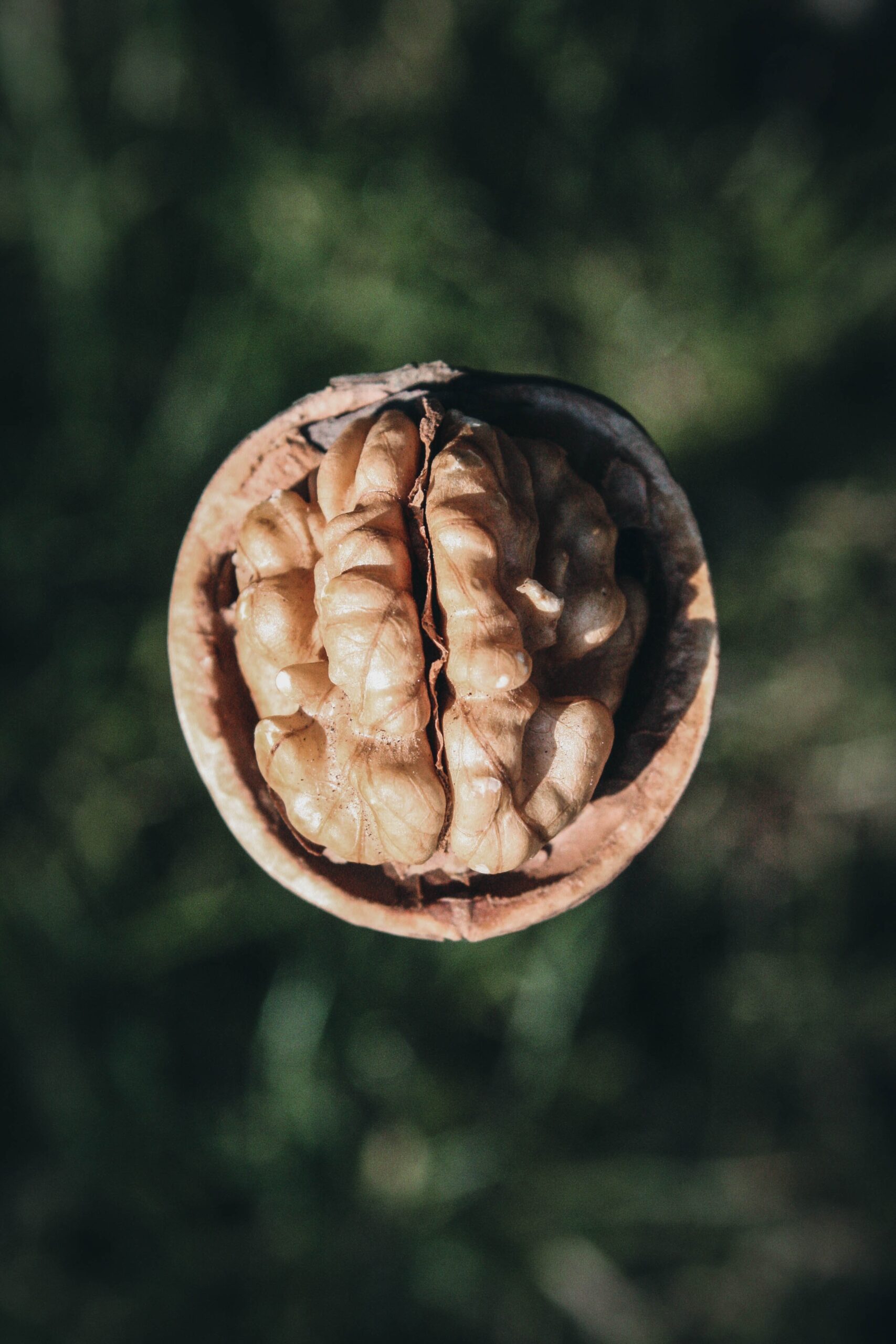
Understanding the Gut-Brain Connection, and how to improve it!
Have you ever felt butterflies in your stomach before doing a presentation? Or ‘gone with your gut’ to make a decision? That, my friends, is the gut/brain connection.
The gut-brain connection is huge in the research at present, and it’s endlessly fascinating. Let’s have a look at what it all means…
Signs & symptoms of dysfunction
There is no clear answer of what comes first, poor gut health or mood disorders, but a combination of any of the following means something is amiss:
- Bloating
- Diarrhoea
- Constipation
- Abdominal discomfort
- Stomach pain
- Reflux
- Irritable bowels syndrome
- Inflammatory bowel disease (crohn’s, ulcerative colitis)
- Chronic stress
- Depression
- Anxiety
- ADHD
- Autism
- Parkinson’s
- Alzheimer’s
- Epilepsy
First, introducing two relevant nervous systems
Before we start talking about how the gut-brain connection works, we need to introduce two key nervous systems:
The Central Nervous System (CNS): Consists of the brain and spinal cord. It is referred to as “central” because it combines information from the entire body and coordinates activity across the whole organism.
The Enteric Nervous System (ENS): Is a mesh-like system of neurons that controls the function of the gastrointestinal tract, independently of the CNS. It runs across your whole gastrointestinal tract, from oesophagus to rectum. The ENS is also known as the ‘second brain’. More on this system later…
So what exactly is the gut-brain connection?
“The gut-brain connection consists of bidirectional communication between the central and the enteric nervous system, linking emotional and cognitive centers of the brain with intestinal functions”
In other words, it’s a two-way highway of communication between our gut and our brain. Via this highway our gut health can influence stress, anxiety, mood and cognition, and vice versa. So we want to ensure the roads are working well!
How the gut & brain connect
There are a number of ways the gut and the brain talk to each other:
The Enteric Nervous System
As introduced above, hidden in the walls of the digestive system is our ‘second brain’. We are receiving signals from the ENS all the time that impact our digestion, mood and how we think.
The main role of the ENS is controlling digestion. It controls swallowing, the release of enzymes that break down food, controlling blood flow that helps with nutrient absorption, and elimination. The enteric nervous system doesn’t seem capable of thought as we know it, but it’s in constant communication back and forth with our big brain.
The ENS can also trigger emotional shifts in people experiencing irritable bowel syndrome, constipation, diarrhoea, bloating, and pain. In the past researchers thought that anxiety and depression contributed to digestive upset. Evidence now suggests that irritation in the gastrointestinal system sends signals to the CNS that trigger mood changes.
The key takeaway here is that the gastrointestinal tract is sensitive to emotion! Feelings such as stress, anxiety, anger, sadness and elation can trigger symptoms in the gut.
The Vagus Nerve
The vagus nerve works as the key link between the brain (central nervous system) and the gut (enteric nervous system), carrying an extensive range of signals from the digestive system to the brain and vice versa. Approximately 10-20% of the signals are sent “down” from brain to gut, and around 80-90% are sent “up” from the intestinal wall to the brain. Recent research aimed at ‘stimulating’ the vagus nerve has found a positive impact on the stress response, depression and epilepsy.
Neurotransmitters
Typically we think of neurotransmitters as playing a role in our mood, however recent research has demonstrated that neurotransmitters can play a significant role in our gastrointestinal function.
Neurotransmitters including norepinephrine, epinephrine, dopamine, and serotonin are able to regulate and control not only blood flow, but also affect gut motility, nutrient absorption, gastrointestinal innate immune system, and the microbiome.
Gut Bacteria
We all have about 100 trillion bacteria, both good and bad, in our digestive system – which makes up our microbiome. These gut bacteria produce hundreds of neurochemicals that the brain uses to regulate mental processes such as learning, memory and mood. A prime example is that gut bacteria manufacture about 95 percent of the body’s supply of serotonin, which influences both mood and GI activity!
How to improve the connection – Your Food/Mood List
One way to improve the gut- brain connection is by what we eat. The Food & Mood Centre at Deakin University is doing AMAZING research in this area.
Fibre
Is key for optimum digestive health! Long-term consumption of a low-fibre diet can have detrimental consequences on microbiota diversity and abundance.
Foods to include are a variety of vegetables, legumes, wholegrains, nuts & seeds.
Probiotics
Research shows that probiotics and prebiotics can modulate brain function and behavior, an observation that has led to the term psychobiotics.
When looking at probiotic supplements, getting the correct strain is key. Lactobacillus rhamnosus can reduce stress-induced cortisol levels, resulting in a decrease in anxious and depressive behaviour.
Foods to include are good quality yoghurt, kefir, sauerkraut, kimchi, miso, kombucha, and fermented vegetables.
Prebiotics
Prebiotics are a type of non-digestive dietary fibre that feed your gut bacteria, and beneficially influence activity in the microbiome. They induce the production of anti-inflammatory compounds such as short-chain fatty acids, and have a positive impact on stress hormone levels, emotional processing, and cognition.
Foods to include are onion, leeks, garlic, Jerusalem artichoke, asparagus, beetroot, dandelion root, legumes, oats and flaxseed.
Polyphenols
Polyphenols are a gentle prebiotic that feed the good bacteria in the gut. A telltale sign of polyphenol containing foods is the purple colour. They are a great option for people who find other prebiotics difficult to tolerate.
Foods to include are:
Fruits: Black elderberries, black currants, blueberries, cherries, strawberries, blackberries, plums, raspberries, red apples, black grapes.
Nuts and Seeds: Flaxseed meal, chestnuts, hazelnuts, pecans, black tahini.
Vegetables: Purple/red/orange carrots, purple/red potatoes, red cabbage, spinach, red onions, broccoli, red lettuce.
Grains: Red rice, black rice, red & black quinoa.
Other: Black olives & olive oil.
Processed foods
These are best avoided! Eating processed foods such as white bread and pasta, chips, cakes, biscuits, and confectionery has the ability to negatively impact the microbiome and contribute to inflammation on the gut. It’s best to keep these foods to a minimum.
How to improve the connection – Lifestyle elements
Breathing exercises, yoga & meditation
Food is not the only way we can support the gut-brain link. The vagus nerve is involved with our capacity to regulate the stress response, and this can be influenced by breathing.
Therefore breathing exercises, meditation and yoga all contribute to resilience and managing mood and anxiety symptoms.
If you are experiencing digestive or mood symptoms and want individualised support, please get in touch by booking in a Base Chat or Simplify Session here.
Author
Brooke Schiller, BHSc Nat & Nut, BCom
Brooke is a qualified naturopath with a focus on digestive health, hormones, and adrenal conditions.
Learn more about Brooke here
Book a session with Brooke here
References
https://www.ncbi.nlm.nih.gov/pmc/articles/PMC4367209/
https://www.ncbi.nlm.nih.gov/pmc/articles/PMC5772764/
https://www.ncbi.nlm.nih.gov/pmc/articles/PMC5859128/





